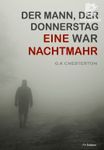40 books
-
1. The Complete Father Brown Mysteries Collection - 51 Books
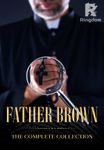
This is the only edition that comes with Professional Formatting and with several Table of Contents for easy accessibility. The first table of contents (at the very beginning of the eBook) lists the titles along with the chapters of all novels included in this volume. By clicking on one of those titles you will be redirected to the beginning of that work, where you will also find a new TOC that lists all the chapters and sub-chapters of that specific work as well. You can access the third table of contents from the menu bar of your reading app. The Father Brown Mysteries fall into the category of mystery fiction or crime fiction. They follow the simple pattern of some mysterious death or crime that needs to be solved. There will be a variety of different suspects that each carry different motives and as a reader you will try and work out the truth along with the detective on the case. The central character must always be the detective and so you can relate to the character and it is only possible for you to know what he knows during the story. WHATS INCLUDED: The Innocence of Father Brown: The Blue Cross The Secret Garden The Queer Feet The Flying Stars The Invisible Man The Honour of Israel Gow The Wrong Shape The Sins of Prince Saradine The Hammer of God The Eye of Apollo The Sign of the Broken Sword The Three Tools of Death The Wisdom of Father Brown: The Absence of Mr Glass The Paradise of Thieves The Duel of Dr Hirsch The Man in the Passage The Mistake of the Machine The Head of Caesar The Purple Wig The Perishing of the Pendragons The God of the Gongs The Salad of Colonel Cray The Strange Crime of John Boulnois The Fairy Tale of Father Brown The Incredulity of Father Brown: The Resurrection of Father Brown The Arrow of Heaven The Oracle of the Dog The Miracle of Moon Crescent The Curse of the Golden Cross The Dagger with Wings The Doom of the Darnaways The Ghost of Gideon Wise The Secret of Father Brown: The Secret of Father Brown The Mirror of the Magistrate The Man With Two Beards The Song of the Flying Fish The Actor and the Alibi The Vanishing of Vaudrey The Worst Crime in the World The Red Moon of Meru The Chief Mourner of Marne The Secret of Flambeau The Scandal of Father Brown: The Scandal of Father Brown The Quick One The Blast of the Book The Green Man The Pursuit of Mr Blue The Crime of the Communist The Point of a Pin The Insoluble Problem The Vampire of the Village Uncollected Stories: The Donnington Affair The Mask of Midas The Adventure of Sherlock Holmes This version has been optimized for readability and includes: BEAUTIFUL FORMATTING There is plenty of white-space which makes reading easy on the eyes. FULLY FEATURED TABLE OF CONTENTS The full Table of Contents appears at the beginning of the book and can be accessed through the MENU or GO TO button. EPUBCHECK The book successfully passes EpubCheck, developed by the IDPF. The International Digital Publishing Forum (IDPF) is the global trade and standards organization dedicated to the development and promotion of electronic publishing and content consumption.
-
2. La saggezza di padre Brown
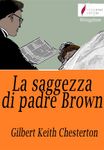
La saggezza di padre Brown (titolo originale: The Wisdom of Father Brown) è la seconda raccolta di racconti gialli dello scrittore inglese G.K.Chesterton, composta nel 1914 e facente parte della serie di racconti che ha come protagonista padre Brown. Gilbert Keith Chesterton, a volte citato come G.K. Chesterton (Londra, 29 maggio 1874 – Beaconsfield, 14 giugno 1936), è stato uno scrittore, giornalista e aforista britannico. Scrittore estremamente prolifico e versatile, scrisse un centinaio di libri, contributi per altri duecento, centinaia di poesie, un poema epico, cinque drammi, cinque romanzi e circa duecento racconti, tra cui la popolare serie con protagonista la figura di padre Brown. Fu autore inoltre di più di quattromila saggi per giornali. Amò molto il paradosso e la polemica, contribuendo inoltre alla teoria economica del distributismo. Traduzione di Gian Dauli.
-
3. The Innocence of Father Brown
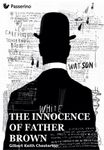
"The Innocence of Father Brown" (1911) is the first collection of stories starring the empathetic detective Father Brown. Sherlock Holmes might be sexier, but GK Chesterton"s atmospheric Father Brown stories are the best the genre has ever seen. "The Blue Cross" "The Secret Garden" "The Queer Feet" "The Flying Stars" "The Invisible Man" "The Honour of Israel Gow" "The Wrong Shape" "The Sins of Prince Saradine" "The Hammer of God" "The Eye of Apollo" "The Three Tools of Death" "The Sign of the Broken Sword" Gilbert Keith Chesterton (1874 – 1936) better known as G. K. Chesterton, was an English writer, lay theologian, poet, philosopher, dramatist, journalist, orator, literary and art critic, biographer, and Christian apologist. Chesterton is well known for his fictional priest-detective Father Brown. Chesterton based the character on Father John O"Connor (1870–1952), a parish priest in Bradford who was involved in Chesterton"s conversion to Catholicism in 1922.
-
4. The wisdom of Father Brown
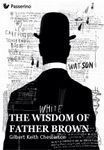
"The Wisdom of Father Brown" (1914) is a collection of twelve stories by G.K. Chesterton, featuring his empathetic detective Father Brown. Sherlock Holmes might be sexier, but GK Chesterton"s atmospheric Father Brown stories are the best the genre has ever seen. The 12 stories in this collection are: THE ABSENCE OF MR GLASS THE PARADISE OF THIEVES THE DUEL OF DR. HIRSCH THE MAN IN THE PASSAGE THE MISTAKE OF THE MACHINE THE HEAD OF CAESAR THE PURPLE WIG THE PERISHING OF THE PENDRAGONS THE GOD OF THE GONGS THE SALAD OF COLONEL CRAY THE STRANGE CRIME OF JOHN BOULNOIS THE FAIRY TALE OF FATHER BROWN Gilbert Keith Chesterton (1874 – 1936) better known as G. K. Chesterton, was an English writer, lay theologian, poet, philosopher, dramatist, journalist, orator, literary and art critic, biographer, and Christian apologist. Chesterton is well known for his fictional priest-detective Father Brown. Chesterton based the character on Father John O"Connor (1870–1952), a parish priest in Bradford who was involved in Chesterton"s conversion to Catholicism in 1922.
-
5. Magic
A Fantastic Comedy (1913) This play is merely the canvas chosen by the author to propose an idea and a question. Does the spiritual realm still have a place in this seemingly practical modern age that we all live in, and if so, how can we as individuals accept it? Chesterton's creation and development of his different characters creatively shows the different views of this issue and how each one reacts and deals with this question. From the very beginning, the play is riveting with mystery and an eloquence entirely the author's own. Sadly, the three acts of the play are all together almost as short as a one-act, which doesn't allow the rich and enjoyable characters the author has created to flourish or to step outside the one pervading idea of the piece and into lives of their own. They only exist to answer the plays thematic question and to react. Once that is done, the play ends as well. Yet its end is well done and satisfying to the plays purpose. This is a very enjoyable quick read, which would be relatively easy to stage and enjoyable to most audiences if the actors are able to find the author's marvellous sarcastic wit as well as the gravity of the issue without falling into melodramatic antics.--Submitted by Mary Pearce
-
6. The Wisdom of Father Brown
(1914) From London to Cornwall, then to Italy and France, a short, shabby priest runs to earth bandits, traitors, killers. Why is he so successful? The reason is that after years spent in the priesthood, Father Brown knows human nature and is not afraid of its dark side. Thus he understands criminal motivation and how to deal with it. The stories included are "The Paradise of Thieves," "The Duel of Dr. Hirsch," "The Man in the Passage," "The Mistakes of the Machine," "The Head of the Caesar," "The Purple Wig," "The Perishing of the Pendragons," "The God of the Gongs," "The Salad of the Colonel Cray," "The Strange Crime of John Boulnois" and "The Fairy Tale of Father Brown."
-
10. Tremendous Trifles
A collection of Essays (1909) Preface These fleeting sketches are all republished by kind permission of the Editor of the Daily News, in which paper they appeared. They amount to no more than a sort of sporadic diary* diary recording one day in twenty which happened to stick in the fancy*** only kind of diary the author has ever been able to keep. Even that diary he could only keep by keeping it in public, for bread and cheese. But trivial as are the topics they are not utterly without a connecting thread of motive. As the reader's eye strays, with hearty relief, from these pages, it probably alights on something, a bed-post or a lamp-post, a window blind or a wall. It is a thousand to one that the reader is looking at something that he has never seen: that is, never realised. He could not write an essay on such a post or wall: he does not know what the post or wall mean. He could not even write the synopsis of an essay; as "The Bed-Post; Its Significance******** Essential to Idea of Sleep***** Felt as Infinite**** of Monumental Architecture," and so on. He could not sketch in outline his theoretic attitude towards window-blinds, even in the form of a summary. "The Window-Blind*** Analogy to the Curtain and Veil** Modesty Natural?******* of and Avoidance of the Sun, etc., etc." None of us think enough of these things on which the eye rests. But don't let us let the eye rest. Why should the eye be so lazy? Let us exercise the eye until it learns to see startling facts that run across the landscape as plain as a painted fence. Let us be ocular athletes. Let us learn to write essays on a stray cat or a coloured cloud. I have attempted some such thing in what follows; but anyone else may do it better, if anyone else will only try.
-
11. The Man Who Was Thursday

At first read, G.K. Chesterton’s the Man Who Was Thursday is a zany mystery story filled with often surreal twists that turn more traditional thrillers on their ear.Set in a fantastic London where the ridiculous never nears the sublime, our hero, Gabriel Syme revolts against the status quo and breaks out as—normal. Yet Syme’s normalcy provides the perfect foil to illustrate the insanity around him—and for Chesterton to illustrate the insanity he saw in turn-of-the-century London.The Man Who Was Thursday, a masterpiece by G. K. Chesterton, revolves around two of the deepest of all theological mysteries: the freedom of the will and the existence of massive, irrational evil.The two mysteries are closely related. We have a knowledge of good and evil and a freedom to choose, within limits, of course, between the two. Somehow our choices are not totally determined, yet somehow they also are not random, as if decisions were made by shaking tiny dice inside our skull.
-
12. Manalive
(1912) A Novel by G. K. Chesterton detailing a popular theme both in his own philosophy, and in Christianity, of the 'holy fool', such as in Dostoevsky's The i***t and Cervantes' Don Quixote. This clever and comical work Chesterton's arguably most memorable and brilliantly constructed character, Innocent Smith, the "allegorical practical joker." Literally blown in by a gusty London wind to Beacon House, Smith immediately transforms the unhappy atmosphere of the house with his insane zest for life. At the height of their new-found joy, however, the residents are shocked as Smith apparently tries to murder one of their numbers. As they investigate his past, they find charges of multiple murder attempts, robberies, desertion of his wife, and polygamy. In the makeshift home trial that ensues, it is up to moody Irish writer Michael Moon to prove the impossible--that Smith's seemingly heinous acts are perfectly innocent; that "everything is wrong about him, except that he has done no wrong."--Submitted by Anonymous.
-
14. Eugenics and Other Evils
(1922) TO THE READER I publish these essays at the present time for a particular reason connected with the present situation; a reason which I should like briefly to emphasise and make clear. Though most of the conclusions, especially towards the end, are conceived with reference to recent events, the actual bulk of preliminary notes about the science of Eugenics were written before the war. It was a time when this theme was the topic of the hour; when eugenic babies (not visibly very distinguishable from other babies) sprawled all over the illustrated papers; when the evolutionary fancy of Nietzsche was the new cry among the intellectuals; and when Mr. Bernard Shaw and others were considering the idea that to breed a man like a cart-horse was the true way to attain that higher civilisation, of intellectual magnanimity and sympathetic insight, which may be found in cart-horses. It may therefore appear that I took the opinion too controversially, and it seems to me that I sometimes took it too seriously. But the criticism of Eugenics soon expanded of itself into a more general criticism of a modern craze for scientific officialism and strict social organisation. And then the hour came when I felt, not without relief, that I might well fling all my notes into the fire. The fire was a very big one, and was burning up bigger things than such pedantic quackeries. And, anyhow, the issue itself was being settled in a very different style. Scientific officialism and organisation in the State which had specialised in them, had gone to war with the older culture of Christendom. Either Prussianism would win and the protest would be hopeless, or Prussianism would lose and the protest would be needless. As the war advanced from poison gas to piracy against neutrals, it grew more and more plain that the scientifically organised State was not increasing in popularity. Whatever happened, no Englishmen would ever again go nosing round the stinks of that low laboratory. So I thought all I had written irrelevant, and put it out of my mind. I am greatly grieved to say that it is not irrelevant. It has gradually grown apparent, to my astounded gaze, that the ruling classes in England are still proceeding on the assumption that Prussia is a pattern for the whole world. If parts of my book are nearly nine years old, most of their principles and proceedings are a great deal older. They can offer us nothing but the same stuffy science, the same bullying bureaucracy and the same terrorism by tenth-rate professors that have led the German Empire to its recent conspicuous triumph. For that reason, three years after the war with Prussia, I collect and publish these papers.--G.K.C.
-
16. The New Jerusalem
(1920) Chesterton's journey across Europe to Palestine. Preface This book is only an uncomfortably large note-book; and it has the disadvantages, whether or no it has the advantages, of notes that were taken on the spot. Owing to the unexpected distraction of other duties, the notes were published in a newspaper as they were made on the spot; and are now reproduced in a book as they were published in the newspaper. The only exception refers to the last chapter on Zionism; and even there the book only reverts to the original note-book. A difference of opinion, which divided the writer of the book from the politics of the newspaper, prevented the complete publication of that chapter in that place. I recognise that any expurgated form of it would have falsified the proportions of my attempt to do justice in a very difficult problem; but on re-reading even my own attempt in extenso, I am far from satisfied that the proper proportions are kept. I wrote these first impressions in Palestine, where everybody recognises the Jew as something quite distinct from the Englishman or the European; and where his unpopularity even moved me in the direction of his defence. But I admit it was something of a shock to return to a conventional atmosphere, in which that unpopularity is still actually denied or described as mere persecution. It was more of a shock to realise that this most obscurantist of all types of obscurantism is still sometimes regarded as a sort of liberalism. To talk of the Jews always as the oppressed and never as the oppressors is simply absurd; it is as if men pleaded for reasonable help for exiled French aristocrats or ruined Irish landlords, and forgot that the French and Irish peasants had any wrongs at all. Moreover, the Jews in the West do not seem so much concerned to ask, as I have done however tentatively here, whether a larger and less local colonial development might really transfer the bulk of Israel to a more independent basis, as simply to demand that Jews shall continue to control other nations as well as their own. It might be worth while for England to take risks to settle the Jewish problem; but not to take risks merely to unsettle the Arab problem, and leave the Jewish problem unsolved. For the rest, there must under the circumstances be only too many mistakes; the historical conjectures, for they can be no more, are founded on authorities sufficiently recognised for me to be permitted to trust them; but I have never pretended to the knowledge necessary to check them. I am aware that there are many disputed points; as for instance the connection of Gerard, the fiery Templar, with the English town of Bideford. I am also aware that some are sensitive about the spelling of words; and the very proof-readers will sometimes revolt and turn Mahomet into Mohammed. Upon this point, however, I am unrepentant; for I never could see the point of altering a form with historic and even heroic fame in our own language, for the sake of reproducing by an arrangement of our letters something that is really written in quite different letters, and probably pronounced with quite a different accent. In speaking of the great prophet I am therefore resolved to call him Mahomet; and am prepared, on further provocation, to call him Mahound.--G. K. C.
-
18. La saggezza di Padre Brown
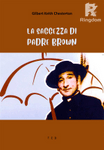
La saggezza di Padre Brown è la seconda raccolta di racconti gialli dello scrittore inglese Gilbert Keith Chesterton, composta nel 1914 e che ha come protagonista il celebre Padre Brown. I 12 racconti sono: L’assenza del signor Glass (1913), Il paradiso dei ladri (1913), Il duello del dottor Hirsch (1914), L’uomo nel vicolo (1913), L’errore della macchina (1913), La testa di Cesare (1913), La parrucca violacea (1913), La morte dei Pendragon (1914), Il dio dei gong (1914), L’insalata del colonnello Cray (1914), Lo strano delitto di John Boulnois (1913), La favola di padre Brown (1914). Tutti i testi sono stati interamente ma prudentemente revisionati.
-
19. Charles Dickens: (1906)
Published in 1906. Chesterton's books and essays on Charles Dickens are among his best. Growing up in London Chesterton found Dickens his best guide to his own background and much of his philosophy came from Dickens's own "social gospel." To understand Chesterton you need to read his biography on Dickens. It will help you understand why he called himself a "disreputable Victorian.
-
20. The Club of Queer Trades
A semi-parody of Detective fiction, published in 1904. Each story in this collection is centered on a person who is making his living by some novel and extraordinary means (a "queer trade", using the word "queer" in the sense of "peculiar"). To gain admittance one must have invented a unique means of earning a living and the subsequent trade being the main source of income.
